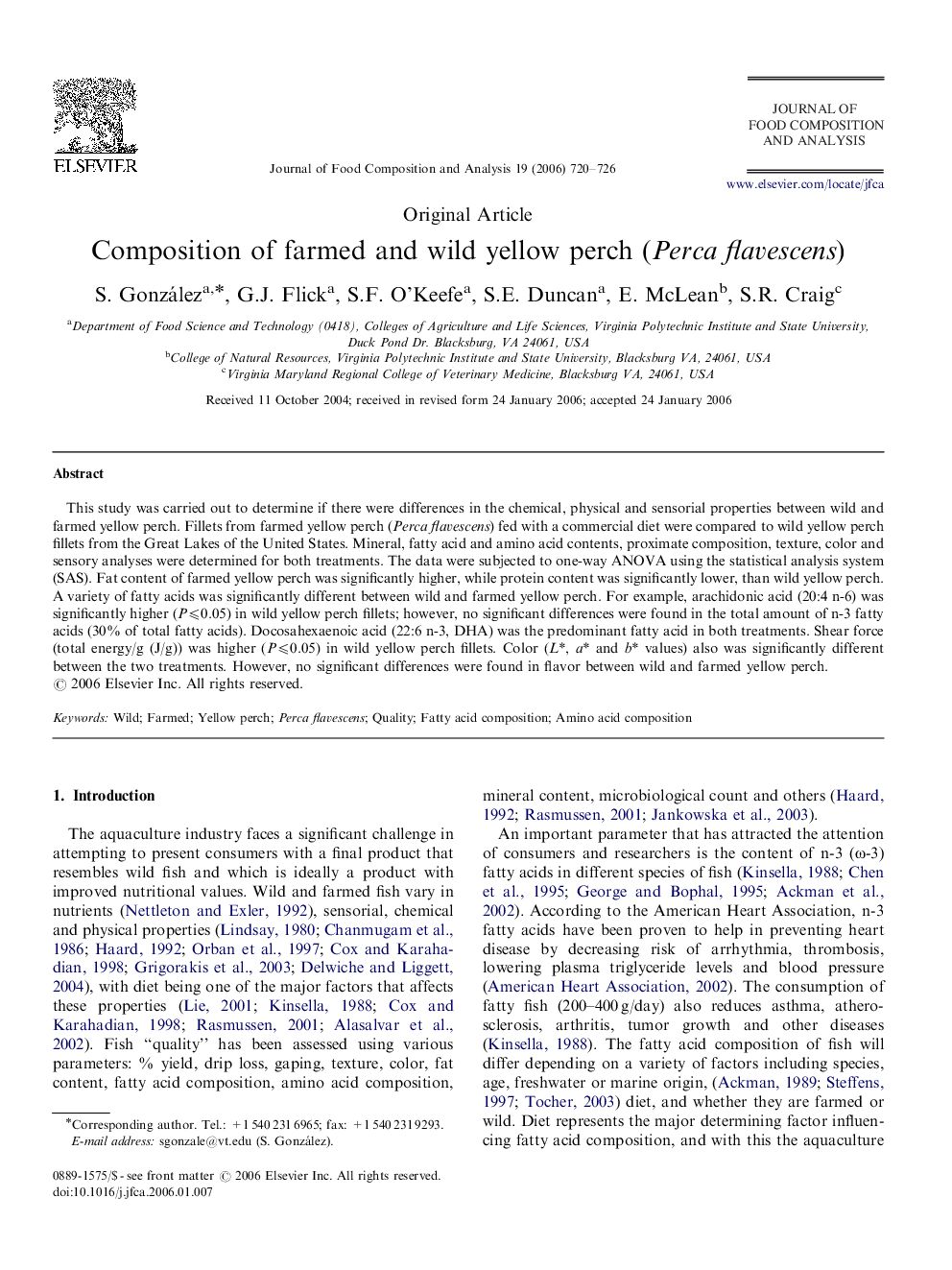| Article ID | Journal | Published Year | Pages | File Type |
|---|---|---|---|---|
| 1219461 | Journal of Food Composition and Analysis | 2006 | 7 Pages |
This study was carried out to determine if there were differences in the chemical, physical and sensorial properties between wild and farmed yellow perch. Fillets from farmed yellow perch (Perca flavescens) fed with a commercial diet were compared to wild yellow perch fillets from the Great Lakes of the United States. Mineral, fatty acid and amino acid contents, proximate composition, texture, color and sensory analyses were determined for both treatments. The data were subjected to one-way ANOVA using the statistical analysis system (SAS). Fat content of farmed yellow perch was significantly higher, while protein content was significantly lower, than wild yellow perch. A variety of fatty acids was significantly different between wild and farmed yellow perch. For example, arachidonic acid (20:4 n-6) was significantly higher (P⩽0.05) in wild yellow perch fillets; however, no significant differences were found in the total amount of n-3 fatty acids (30% of total fatty acids). Docosahexaenoic acid (22:6 n-3, DHA) was the predominant fatty acid in both treatments. Shear force (total energy/g (J/g)) was higher (P⩽0.05) in wild yellow perch fillets. Color (L*, a* and b* values) also was significantly different between the two treatments. However, no significant differences were found in flavor between wild and farmed yellow perch.
